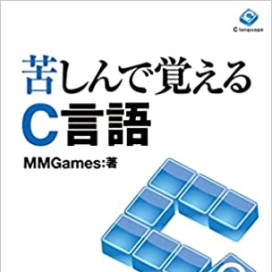
Read it right next to your computer.
Book version bitter C
#include <stdio.h>
int main(void)
{
int x, y;
x = 10;
y = x * 10 + 20;
printf("%5d\n", y);
return 0;
}#include <stdio.h>
int main(void)
{
int juice, milk, money, payment, change;
double tax;
juice = 198;
milk = 138;
money = 1000;
tax = 1.05;
payment = (int)((juice + milk * 2) * tax);
change = money - payment;
printf("%d円\n", change);
return 0;
}
Learning C language through suffering (Kushi C) is
This is the definitive introduction to the C language.
It systematically explains the basic functions of the C language.
The quality is equal to or higher than commercially available books.